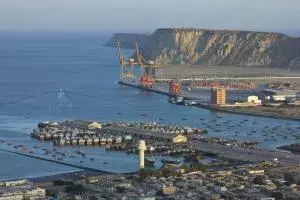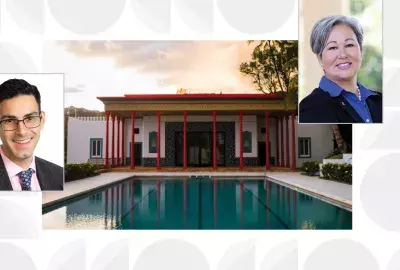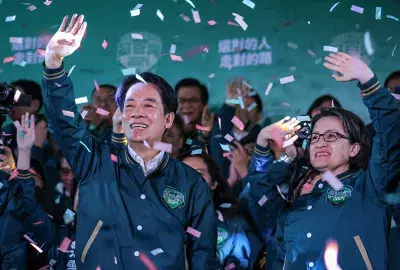Error message

By Anu Anwar
HONOLULU (November 1, 2019)—Originally announced by Chairman Xi Jinping in 2013, the Belt and Road Initiative (BRI) aims to bolster China’s connectivity with the world. While the name Belt and Road Initiative implies two routes—a maritime road through the Indian Ocean and a land belt across Central Asia—in reality, BRI projects encompass multiple, interconnected global networks. The BRI combines old and new projects, covers an extended geographic region, and includes efforts to strengthen infrastructure development, investment, and cultural ties.
According to official estimates, the Chinese government is pursuing BRI projects in 138 countries, primarily in South, Southeast, and Central Asia, Africa, and the Middle East. Despite Xi’s claims that BRI “is an open and inclusive process, and not about creating an exclusive China club,” the initiative is viewed by many as the centerpiece of China’s foreign policy aspirations.
In recent years, questions have been raised about why Beijing provides billions of dollars in loans to debt-strapped nations for infrastructure projects of questionable commercial viability if not as part of a quest for regional and global dominance. Given the growing controversy, it is critical to understand what China’s goals for the BRI really are. Why are the Chinese so determined to push forward with these projects despite mounting economic and political risks? The rationale can be explained in terms of both internal and external pressures and ambitions.
Three roles for the BRI within China
Three important roles for the BRI stem from current conditions within China. The first is inequality between the inland western regions and the prosperous provinces on the eastern seaboard. For example, Shanghai, which is counted as a province, is five times wealthier on a per capita basis than the inland province of Gansu.
This level of inequality presents a huge challenge for the Chinese Communist Party. Minority populations in autonomous regions such as Xinjiang and Tibet have grown increasingly frustrated with Beijing’s rule, and party leaders tend to believe that poverty and underdevelopment are at the heart of this rising militancy. BRI projects are part of Beijing’s strategy to address this problem by integrating the nation’s underdeveloped regions with their wealthier neighbors.
A second domestic role for BRI is to provide an outlet for Chinese companies’ excess capacity in infrastructure construction. Given that most BRI projects have been in developing countries, China has used BRI to provide business opportunities to state-owned enterprises and to shift excess construction capacity out of China to build highways, ports, bridges, and power plants in other countries.
Third, the BRI is Xi Jinping’s flagship project and has become inseparable from his personal image within China. In 2017, the BRI was enshrined in the Chinese Communist Party Charter, effectively extending and solidifying Xi’s position as present and future leader. Xi promotes the “Chinese dream” of becoming a prosperous nation with a global role, often portrayed as “building a community of shared destiny.” The BRI embodies China’s—and Xi’s—embrace of a leadership role in building that community.
Four roles for the BRI on the global stage
At the international level, the development of transportation infrastructure under the BRI can help solve China’s “Malacca dilemma.” This refers to the narrow strait between the Malay Peninsula and the Indonesian island of Sumatra that provides the shortest maritime route from East Asia to Europe, Africa, and the Middle East.
Today, despite increased imports from Russia and Central Asia, an estimated 80 percent of China’s total energy supply comes from the Middle East and passes through the Malacca Strait. Any disruption to traffic on the Strait—ranging from piracy to a potential naval blockade by the United States or its allies—would have an immediate impact on China’s energy security.
Through the BRI, China is developing several alternative routes for the transportation of energy and other critical supplies. These include the China-Myanmar Economic Corridor, the China-Pakistan Economic Corridor, and the Bangladesh-China-India-Myanmar Economic Corridor. These overland routes cannot substitute entirely for the shipping route through Southeast Asia, but they are likely to reduce China’s dependence on the Malacca Strait as a conduit for oil and other imports.
A more general role for the BRI is to extend the Chinese government’s political and economic influence in other countries. Chinese loans that helped Chinese companies build the Hambantota port in Sri Lanka and the Gwadar port in Pakistan were likely not made simply to accelerate maritime trade across the region. Access to these ports could potentially allow China to dock its military vessels and patrol the surrounding areas, effectively checking India’s maritime dominance in the region. Such infrastructure projects also make the governments of developing countries indebted to China, creating some leverage and checking the dominance of other big powers in the region, notably the United States.
Third, China is using the BRI to enhance its global leadership image. Although China has always regarded itself as a leader within Asia, there has not been a signature activity that could make China a meaningful partner in international development on a global scale. The Chinese government understands that to challenge the United States as a global leader, it needs to shed its insular image. Like the U.S. Marshall Plan for Europe, the BRI is China’s attempt to assume the role of a benevolent country with international leadership potential. In this regard, the BRI is central to China’s “soft-power” diplomacy.
Fourth, learning from the United States, the Chinese have realized that having a global currency offers leverage in international financial markets. Since BRI projects are financed, constructed, and operated by Chinese companies, payments can be made and received in Chinese currency. Indeed, use of the yuan has grown faster in countries with BRI projects than in the rest of the world. Recently, China and Pakistan agreed to conduct bilateral trade transactions in their own currencies.
Substantial political risk
After six years, it is too early to determine if the BRI will be successful, but the political risk for the Chinese is substantial. Success will depend on several factors, ranging from the government’s handling of China’s current domestic economic downturn to the potential for an international backlash. As the BRI is now enshrined in the Communist Party Charter as Chairman Xi’s signature foreign policy initiative, a failure could affect the legitimacy of the party itself. After spending billions of dollars abroad while China still has many internal needs, failure to complete successful projects and to gain positive international recognition could lead the Chinese to question the wisdom of both the party and its chairman.
###
Anu Anwar ([email protected]) is a Research Fellow at the Daniel K. Inouye Asia Pacific Center for Security Studies. He is also an Affiliate Scholar at the East-West Center and a Visiting Fellow at the Institute for Advanced Studies on Asia at the University of Tokyo.
Download a pdf version of this Wire article.
The East-West Wire is a news, commentary, and analysis service provided by the East-West Center in Honolulu. All or any part of the Wire content may be used by media with attribution to the East-West Center or the person quoted. To receive Wire articles via email, subscribe here. For links to all East-West Center media programs, fellowships and services, see EastWestCenter.org/Journalists.
The full list of East-West Wires produced by the Research Program is available on the East-West Center website at EastWestCenter.org/Research-Wire. For more on the East-West Center Research Program, see EastWestCenter.org/Research. The East-West Center promotes better relations and understanding among the people and nations of the United States, Asia, and the Pacific through cooperative study, research, and dialogue.
Series editors:
Derek Ferrar
[email protected]
Sidney B. Westley
[email protected]
The views expressed do not necessarily reflect the policy or position of the East-West Center or of any other organization.
Photo: Gwadar Port in western Pakistan is being developed with Chinese funding as one component of the China-Pakistan Economic Corridor. Credit: SM Rafiq Photography, Getty Images.
By Anu Anwar
HONOLULU (November 1, 2019)—Originally announced by Chairman Xi Jinping in 2013, the Belt and Road Initiative (BRI) aims to bolster China’s connectivity with the world. While the name Belt and Road Initiative implies two routes—a maritime road through the Indian Ocean and a land belt across Central Asia—in reality, BRI projects encompass multiple, interconnected global networks. The BRI combines old and new projects, covers an extended geographic region, and includes efforts to strengthen infrastructure development, investment, and cultural ties.
According to official estimates, the Chinese government is pursuing BRI projects in 138 countries, primarily in South, Southeast, and Central Asia, Africa, and the Middle East. Despite Xi’s claims that BRI “is an open and inclusive process, and not about creating an exclusive China club,” the initiative is viewed by many as the centerpiece of China’s foreign policy aspirations.
In recent years, questions have been raised about why Beijing provides billions of dollars in loans to debt-strapped nations for infrastructure projects of questionable commercial viability if not as part of a quest for regional and global dominance. Given the growing controversy, it is critical to understand what China’s goals for the BRI really are. Why are the Chinese so determined to push forward with these projects despite mounting economic and political risks? The rationale can be explained in terms of both internal and external pressures and ambitions.
Three roles for the BRI within China
Three important roles for the BRI stem from current conditions within China. The first is inequality between the inland western regions and the prosperous provinces on the eastern seaboard. For example, Shanghai, which is counted as a province, is five times wealthier on a per capita basis than the inland province of Gansu.
This level of inequality presents a huge challenge for the Chinese Communist Party. Minority populations in autonomous regions such as Xinjiang and Tibet have grown increasingly frustrated with Beijing’s rule, and party leaders tend to believe that poverty and underdevelopment are at the heart of this rising militancy. BRI projects are part of Beijing’s strategy to address this problem by integrating the nation’s underdeveloped regions with their wealthier neighbors.
A second domestic role for BRI is to provide an outlet for Chinese companies’ excess capacity in infrastructure construction. Given that most BRI projects have been in developing countries, China has used BRI to provide business opportunities to state-owned enterprises and to shift excess construction capacity out of China to build highways, ports, bridges, and power plants in other countries.
Third, the BRI is Xi Jinping’s flagship project and has become inseparable from his personal image within China. In 2017, the BRI was enshrined in the Chinese Communist Party Charter, effectively extending and solidifying Xi’s position as present and future leader. Xi promotes the “Chinese dream” of becoming a prosperous nation with a global role, often portrayed as “building a community of shared destiny.” The BRI embodies China’s—and Xi’s—embrace of a leadership role in building that community.
Four roles for the BRI on the global stage
At the international level, the development of transportation infrastructure under the BRI can help solve China’s “Malacca dilemma.” This refers to the narrow strait between the Malay Peninsula and the Indonesian island of Sumatra that provides the shortest maritime route from East Asia to Europe, Africa, and the Middle East.
Today, despite increased imports from Russia and Central Asia, an estimated 80 percent of China’s total energy supply comes from the Middle East and passes through the Malacca Strait. Any disruption to traffic on the Strait—ranging from piracy to a potential naval blockade by the United States or its allies—would have an immediate impact on China’s energy security.
Through the BRI, China is developing several alternative routes for the transportation of energy and other critical supplies. These include the China-Myanmar Economic Corridor, the China-Pakistan Economic Corridor, and the Bangladesh-China-India-Myanmar Economic Corridor. These overland routes cannot substitute entirely for the shipping route through Southeast Asia, but they are likely to reduce China’s dependence on the Malacca Strait as a conduit for oil and other imports.
A more general role for the BRI is to extend the Chinese government’s political and economic influence in other countries. Chinese loans that helped Chinese companies build the Hambantota port in Sri Lanka and the Gwadar port in Pakistan were likely not made simply to accelerate maritime trade across the region. Access to these ports could potentially allow China to dock its military vessels and patrol the surrounding areas, effectively checking India’s maritime dominance in the region. Such infrastructure projects also make the governments of developing countries indebted to China, creating some leverage and checking the dominance of other big powers in the region, notably the United States.
Third, China is using the BRI to enhance its global leadership image. Although China has always regarded itself as a leader within Asia, there has not been a signature activity that could make China a meaningful partner in international development on a global scale. The Chinese government understands that to challenge the United States as a global leader, it needs to shed its insular image. Like the U.S. Marshall Plan for Europe, the BRI is China’s attempt to assume the role of a benevolent country with international leadership potential. In this regard, the BRI is central to China’s “soft-power” diplomacy.
Fourth, learning from the United States, the Chinese have realized that having a global currency offers leverage in international financial markets. Since BRI projects are financed, constructed, and operated by Chinese companies, payments can be made and received in Chinese currency. Indeed, use of the yuan has grown faster in countries with BRI projects than in the rest of the world. Recently, China and Pakistan agreed to conduct bilateral trade transactions in their own currencies.
Substantial political risk
After six years, it is too early to determine if the BRI will be successful, but the political risk for the Chinese is substantial. Success will depend on several factors, ranging from the government’s handling of China’s current domestic economic downturn to the potential for an international backlash. As the BRI is now enshrined in the Communist Party Charter as Chairman Xi’s signature foreign policy initiative, a failure could affect the legitimacy of the party itself. After spending billions of dollars abroad while China still has many internal needs, failure to complete successful projects and to gain positive international recognition could lead the Chinese to question the wisdom of both the party and its chairman.
###
Anu Anwar ([email protected]) is a Research Fellow at the Daniel K. Inouye Asia Pacific Center for Security Studies. He is also an Affiliate Scholar at the East-West Center and a Visiting Fellow at the Institute for Advanced Studies on Asia at the University of Tokyo.
Download a pdf version of this Wire article.
The East-West Wire is a news, commentary, and analysis service provided by the East-West Center in Honolulu. All or any part of the Wire content may be used by media with attribution to the East-West Center or the person quoted. To receive Wire articles via email, subscribe here. For links to all East-West Center media programs, fellowships and services, see EastWestCenter.org/Journalists.
The full list of East-West Wires produced by the Research Program is available on the East-West Center website at EastWestCenter.org/Research-Wire. For more on the East-West Center Research Program, see EastWestCenter.org/Research. The East-West Center promotes better relations and understanding among the people and nations of the United States, Asia, and the Pacific through cooperative study, research, and dialogue.
Series editors:
Derek Ferrar
[email protected]
Sidney B. Westley
[email protected]
The views expressed do not necessarily reflect the policy or position of the East-West Center or of any other organization.
Photo: Gwadar Port in western Pakistan is being developed with Chinese funding as one component of the China-Pakistan Economic Corridor. Credit: SM Rafiq Photography, Getty Images.
East-West Wire
News, Commentary, and Analysis
The East-West Wire is a news, commentary, and analysis service provided by the East-West Center in Honolulu. Any part or all of the Wire content may be used by media with attribution to the East-West Center or the person quoted. To receive East-West Center Wire media releases via email, subscribe here.
For links to all East-West Center media programs, fellowships and services, see www.eastwestcenter.org/journalists.







